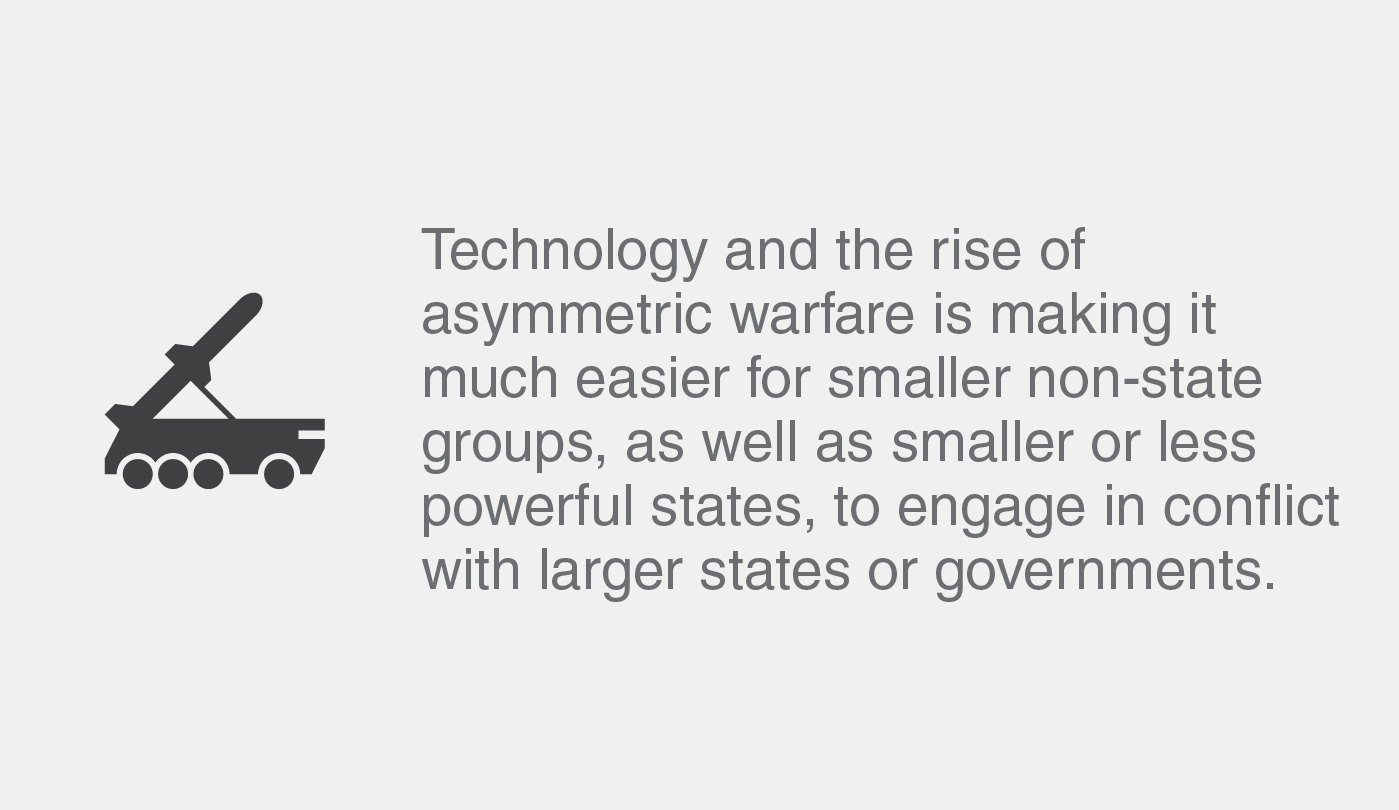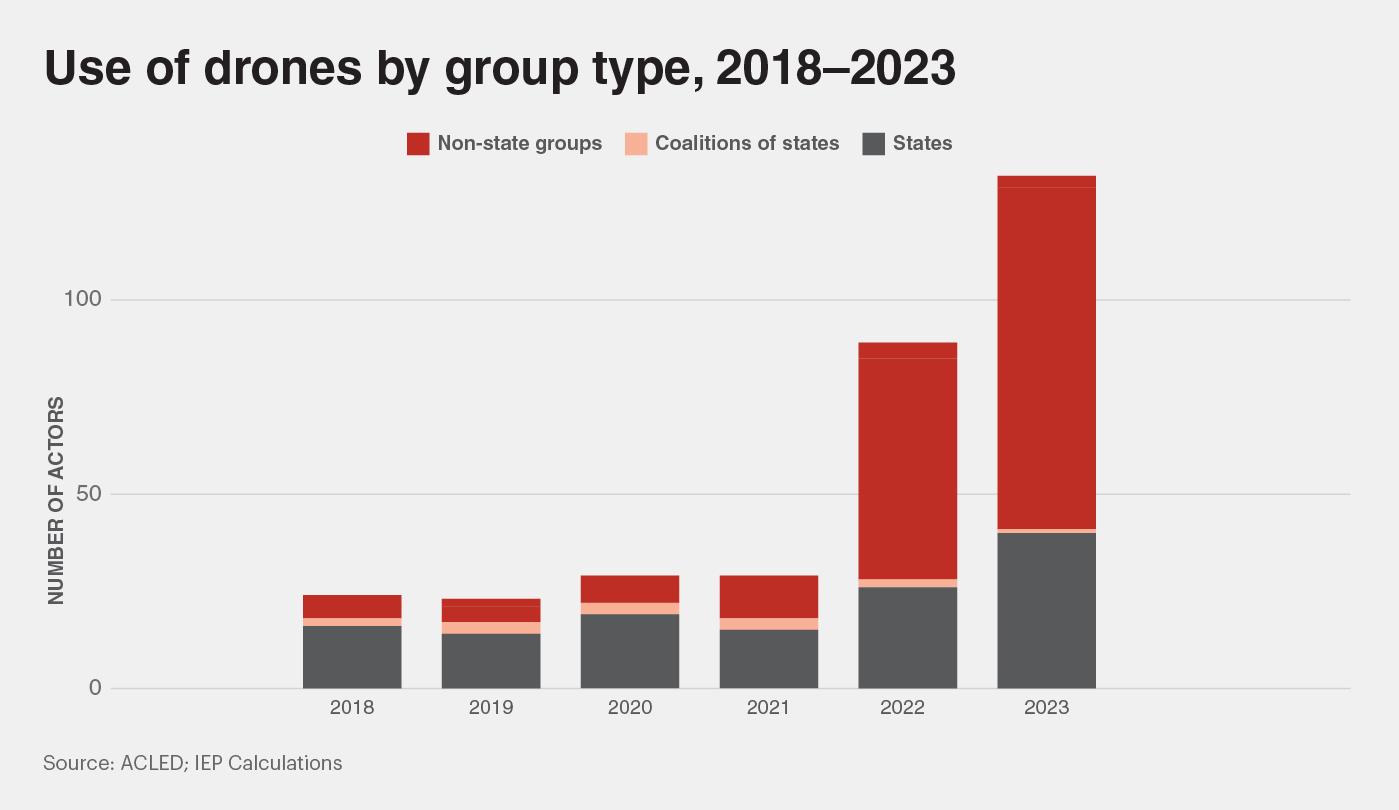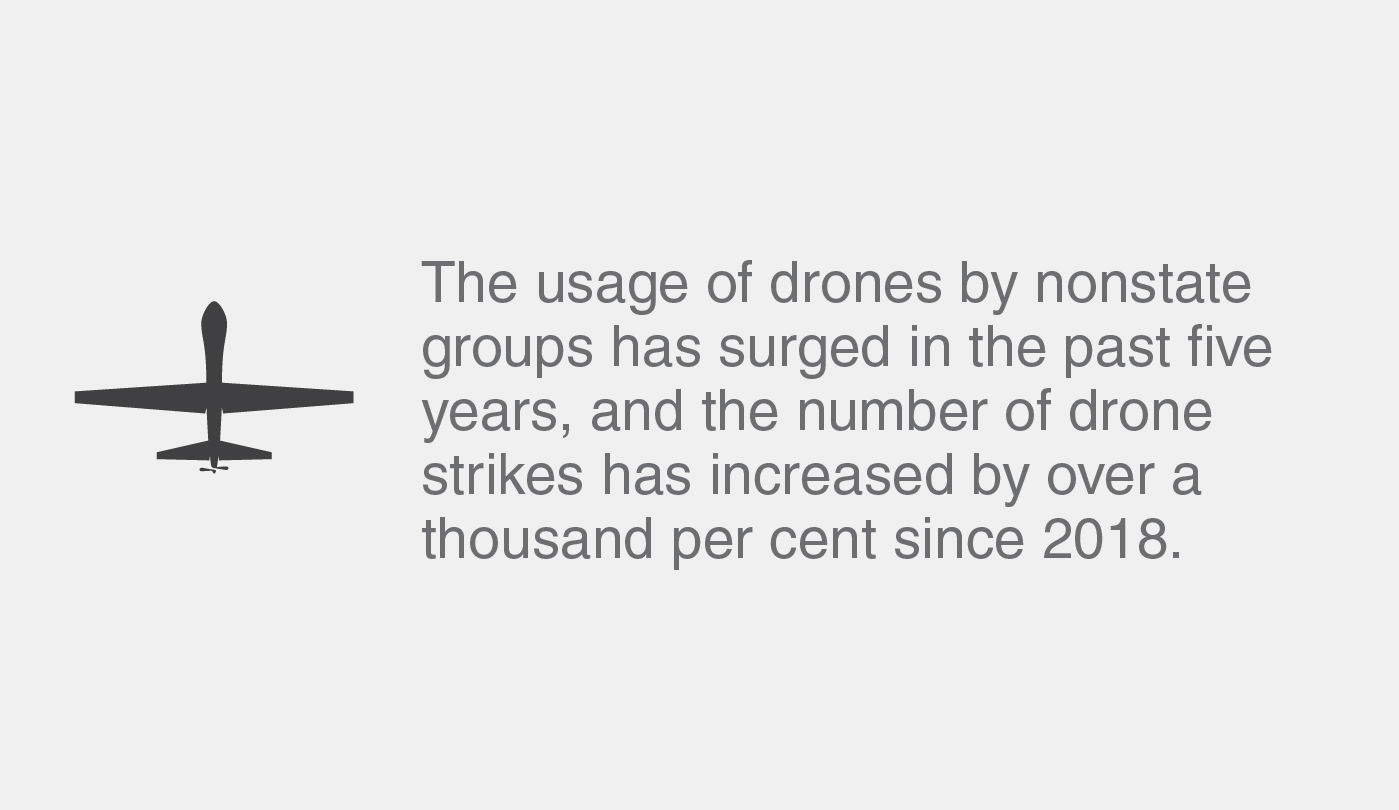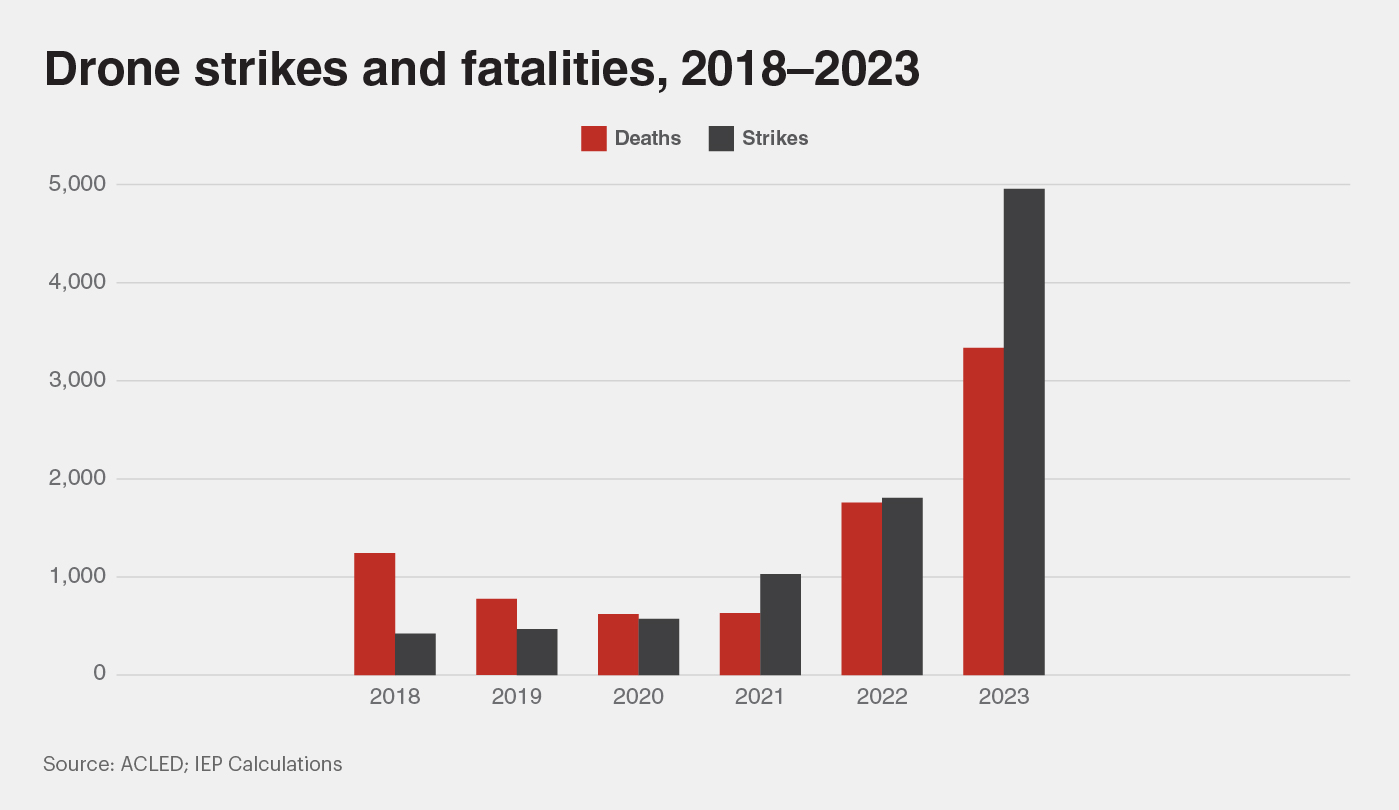Changes in military technology have shaped warfare in the 21st century. Unmanned aerial vehicles (UAVs), commonly known as drones, have been increasingly used by both state and non-state actors, with the number of drone strikes and associated fatalities rising significantly in the past five years. The increasing adoption of drones has allowed non-state groups to engage more effectively with larger, more powerful states. This shift has made conflicts more complex and harder to resolve.

As demand for drones has increased, states such Türkiye and Iran have expanded their export of military drones. Türkiye’s growing role as one of the world’s largest ‘middle power’ weapons exporters has involved its export of UAVs to many countries, including in the conflict-prone Central Sahel region of sub-Saharan Africa. This trend is in line with Türkiye’s increased militarisation, showing a deterioration in the weapons export indicator in the Global Peace Index 2024.

While the use of drones by both state and non-state actors has risen, non-state actors have a much greater increase in adoption. Between 2018 and 2023, the number of states using drones rose from 16 to 40, a 150 per cent increase. However, over the same period the number of non-state groups who committed at least one drone attack rose from six to 91, an increase of over 1,400 per cent. The ease of access to drones has provided non-state actors with an additional tool.
As general drone use in conflict has risen, the number of drone strikes and fatalities has similarly increased. In 2023, there were over 3,000 deaths from drone strikes, or just under two per cent of all battle deaths. This represented a rise of 168 per cent since 2018. The number of drone strikes showed a far more dramatic increase, with 4,957 strikes recorded in 2023, up from just 421 in 2018.

Non-state groups have incorporated drone usage as a tactic within asymmetric warfare. Asymmetric warfare generally involves weaker parties employing unconventional strategies to avoid conventional military engagements with a superior force that would likely lead to defeat. Drones are a reasonably effective tactic that minimises risk to group members and expands the range of feasible targets. This allows these weaker groups to overcome their limitations in military capability, making it more costly and difficult for the stronger power to win.
Non-state group usage has been prominently seen in Myanmar, where many small rebel groups have utilised cheap drones in combat against the far better equipped military junta. This use required little formal technological training, with rebel groups largely relying on online instructions and parts ordered from China. The relative ease of access and operation of this technology has made it significantly easier for armed resistance groups to stage attacks.
Drones have also been used to lethal effect in terrorist attacks. An October 2023 terrorist attack in Syria saw several explosive-laden drones kill over 89 soldiers and civilians and wound at least 240 others in an attack on a military college graduation ceremony in the Homs region. This attack was the third most deadly terrorism attack in 2023, as recorded in the Global Terrorism Index 2024.

State actors have used drones for warfare and intelligence gathering, significantly reducing the need for infantry. Drones can undertake reconnaissance and surveillance missions without putting human lives at risk, while advanced military drones using precision-guided munitions can more accurately target specific enemy assets. These advancements increase the ability of militaries to respond rapidly to emerging threats. The increase in state drone usage also implies a shift towards remote and autonomous military capabilities, with UAVs set to play a pivotal role in future military operations and security strategies worldwide.
The most striking example of the use of drones by a state actor in the last year occurred in the conflict in Ukraine. In 2023, just under eight per cent of all deaths from drone strikes and 30 per cent of total strikes occurred in the conflict in Ukraine. Drones have also been used in non-combat roles, with some estimates suggesting that Ukraine loses about 10,000 drones a month. Ukraine is currently on track to produce over a million drones this year and pioneered a drone warfare military branch in 2024. The primary use of drones has been in surveillance, reconnaissance, and documentation, with fewer than 400 deaths in the conflict attributed to drone strikes. Additionally, drones have contributed to psychological warfare, allowing Ukraine to directly target Russian territory, including strikes on Russian energy infrastructure. Ukrainian naval drones have also seen use in offensive operations against Russian naval forces in the black sea.
Although drones have proven useful in conflict situations, they are not yet at the point where they can decisively shift the balance of conflicts. Current air defence systems remain largely effective at detecting and neutralising drone threats, limiting the military advantage offered by the technology. However, as drone-related technology and tactics continue to evolve, it is highly likely that drone usage in conflict will continue to increase.